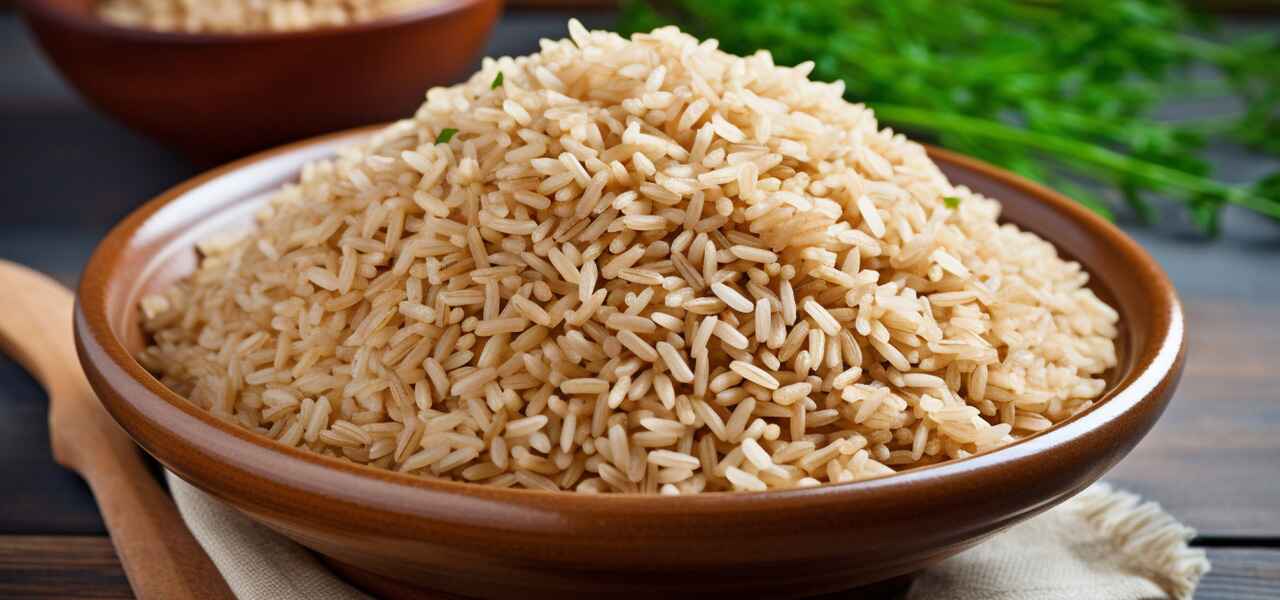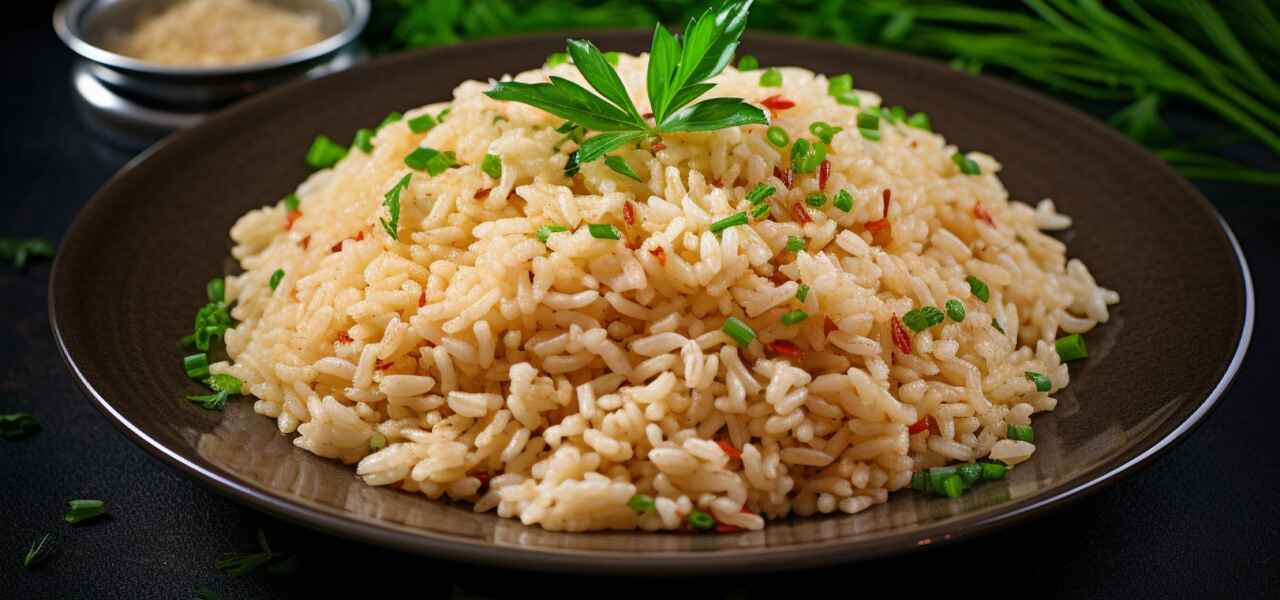Introduction:
Brown rice is more than just a whole grain; it’s a symbol of healthy living for millions around the globe. Its rich nutritional profile and various health benefits make it a cornerstone in the diets of people aiming for weight loss, improved digestion, heart health, and overall well-being. If you’re curious about why brown rice deserves a spot in your pantry, keep reading as we dive into what makes brown rice so remarkable and how it can benefit your body.
What is Brown Rice?
Before we explore its benefits, it’s important to understand what brown rice is. Brown rice is a whole grain that is minimally processed compared to its counterpart, white rice. The key difference between the two is the milling process. White rice has its outer bran and germ removed, while brown rice retains these essential layers, making it rich in fiber, vitamins, and minerals.
This minimal processing is what gives brown rice its distinct nutty flavor and chewy texture. While it might take longer to cook than white rice, the health benefits far outweigh the extra cooking time.
Nutritional Profile of Brown Rice
Brown rice is a nutrient-dense food, loaded with essential vitamins, minerals, and powerful antioxidants. Here’s a breakdown of the key nutrients found in one cup of cooked brown rice (195g):
- Calories: 216 kcal
- Carbohydrates: 45g
- Protein: 5g
- Fat: 1.8g
- Fiber: 3.5g
- Magnesium: 21% of the RDI (Recommended Daily Intake)
- Phosphorus: 16% of the RDI
- Manganese: 88% of the RDI
- Selenium: 27% of the RDI
- Vitamin B6: 12% of the RDI
These numbers might seem basic, but each nutrient plays a vital role in maintaining good health. The high manganese content, in particular, supports bone health, blood sugar regulation, and metabolism.
The Health Benefits of Brown Rice
Rich in Fiber for Digestive Health: Brown rice is an excellent source of dietary fiber, which promotes digestive health. Fiber adds bulk to the stool and helps prevent constipation. It also acts as a prebiotic, nourishing the beneficial bacteria in your gut, which is essential for optimal digestion and overall immune health.
Aids in Weight Loss:
If you’re aiming to shed a few pounds, brown rice can be your ally. Its high fiber content helps you feel full for longer, curbing hunger pangs and reducing calorie intake. Brown rice has a low glycemic index (GI), meaning it doesn’t cause rapid spikes in blood sugar levels, which are often linked to increased hunger and cravings. By keeping your blood sugar stable, brown rice helps manage weight effectively.
Supports Heart Health: Heart disease is one of the leading causes of death worldwide, and a healthy diet can significantly lower your risk. Brown rice contains compounds like lignans and magnesium that are linked to reduced inflammation and improved cardiovascular function. The fiber in brown rice also helps lower cholesterol levels by binding to cholesterol in the digestive system and promoting its elimination from the body.
Controls Blood Sugar Levels: For those at risk of developing Type 2 diabetes or for individuals already managing it, brown rice is a healthier alternative to white rice. Its lower glycemic index means it has a slower effect on blood sugar, reducing insulin spikes. Studies have shown that replacing white rice with brown rice in your diet may reduce the risk of Type 2 diabetes by 16%.
Rich in Antioxidants: Brown rice is packed with antioxidants like phenolic compounds and flavonoids, which help protect your cells from oxidative stress. These antioxidants neutralize harmful free radicals in the body, reducing the risk of chronic diseases such as cancer, heart disease, and neurodegenerative conditions.
Boosts Brain Function: The manganese in brown rice plays an essential role in cognitive function. This trace mineral helps with neurotransmitter production and overall brain health. It may also help reduce the risk of neurological disorders like Alzheimer’s and Parkinson’s diseases, thanks to its ability to combat oxidative damage in the brain.
Improves Bone Health:
Manganese, phosphorus, and magnesium are all present in significant amounts in brown rice, making it an excellent food for bone health. Magnesium, in particular, is essential for calcium absorption and bone density, reducing the risk of osteoporosis.
Provides Energy and Enhances Metabolism:
Brown rice is a complex carbohydrate, which means it provides long-lasting energy. The gradual release of glucose into your bloodstream helps maintain steady energy levels throughout the day. Furthermore, the high magnesium content supports enzyme function, which is crucial for energy production and metabolism.
How to Incorporate Brown Rice into Your Diet
As a Base for Bowls: Brown rice serves as an excellent base for grain bowls. Combine it with vegetables, lean proteins, and healthy fats for a balanced meal. You can mix it with greens like spinach, roasted veggies, and a source of protein like grilled chicken or tofu for a nutritious, satisfying meal.
In Soups and Stews: Adding brown rice to soups and stews can enhance the texture and nutrient content. It pairs well with both vegetable-based and meat-based soups, adding bulk without overpowering the flavors.
Healthy Stir-fries: Swap out white rice for brown rice in your favorite stir-fry recipes. It absorbs the flavors of the sauces while providing a chewy, satisfying bite. Mix it with plenty of vegetables, lean meats, and a light sauce for a delicious, nutrient-packed dinner.
As a Side Dish: Brown rice can be a versatile side dish for any meal. Add a squeeze of lemon, some herbs, and a drizzle of olive oil for a simple yet flavorful accompaniment to fish, chicken, or grilled vegetables.
In Grain Salads:
Brown rice can add depth and texture to grain salads. Pair it with ingredients like cucumbers, tomatoes, chickpeas, feta cheese, and a lemon-tahini dressing for a hearty and refreshing salad.
Cooking Tips for Brown Rice
Cooking brown rice may take slightly longer than white rice, but it’s well worth the wait. Here’s a simple guide to help you get perfectly cooked brown rice every time:
Rinse the Rice: Rinsing brown rice removes excess starch, preventing it from becoming sticky. Place the rice in a sieve and rinse under cold water until the water runs clear.
Water Ratio: The ideal water-to-rice ratio for brown rice is about 2.5:1. For one cup of brown rice, use 2.5 cups of water.
Cooking Time: Brown rice typically takes around 40-50 minutes to cook. Bring the water to a boil, then reduce the heat and let it simmer with the lid on until all the water is absorbed.
Fluff with a Fork: Once the rice is cooked, let it sit for 5-10 minutes before fluffing it with a fork. This resting time allows the rice to steam and become light and fluffy.
Potential Downsides of Brown Rice
While brown rice is incredibly healthy, there are a few factors to keep in mind:
- Arsenic Content: Like many rice varieties, brown rice may contain trace amounts of arsenic, a naturally occurring element that can be harmful in large quantities. To minimize arsenic exposure, rinse your rice thoroughly before cooking and avoid eating it excessively.
- Phytic Acid: Brown rice contains phytic acid, an anti-nutrient that can inhibit the absorption of certain minerals like iron and zinc. However, for most people with a balanced diet, this isn’t a cause for concern.
Conclusion:
Brown rice is a nutritional powerhouse that offers a wide range of health benefits, from improved digestion to better heart health and more stable blood sugar levels. Incorporating it into your diet is easy and rewarding, whether you’re using it as a side dish, in salads, or as the base for hearty grain bowls. While it may take a bit more time to cook than white rice, the health benefits are more than worth the extra effort. So, next time you’re at the grocery store, consider swapping out white rice for this wholesome, nutrient-packed grain.







